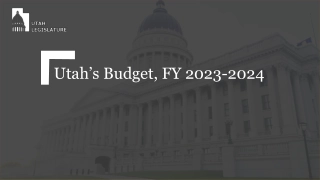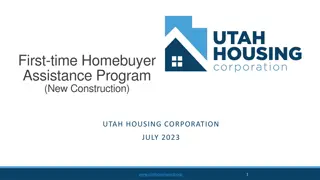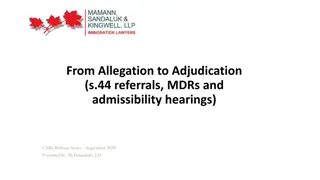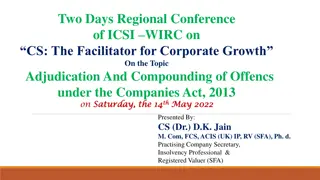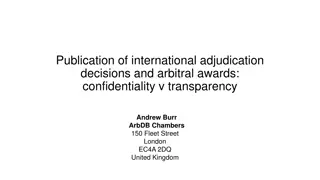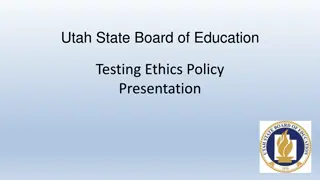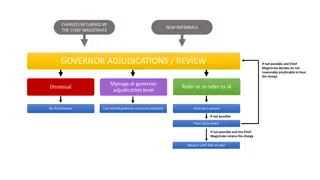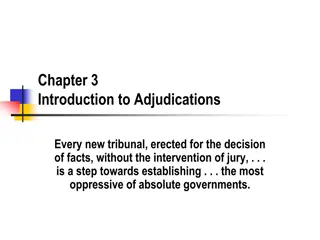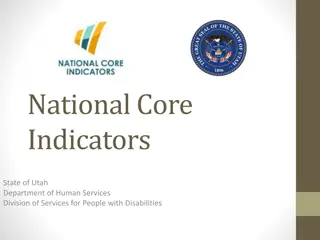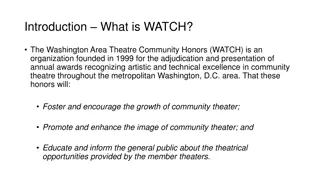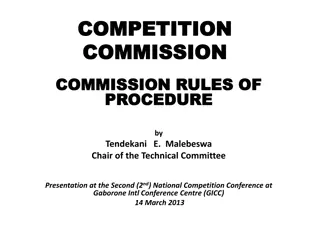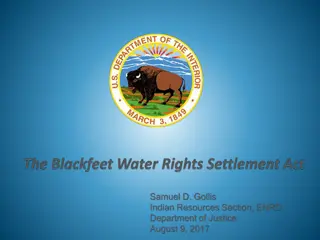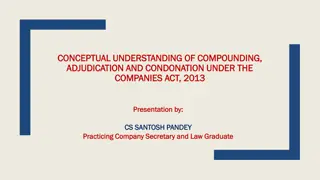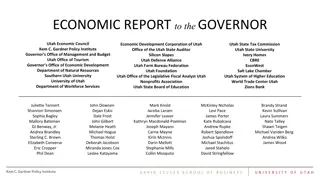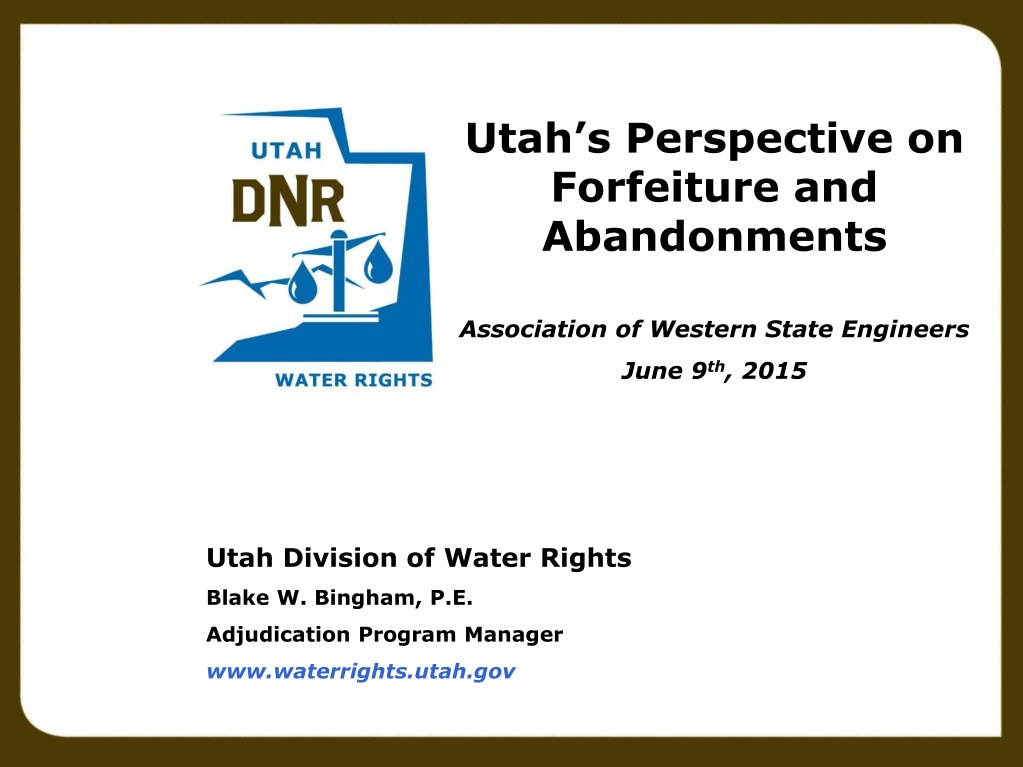
Understanding Utah's Water Rights Adjudication Process
Explore Utah's approach to water rights adjudication, including the steps involved in forfeiture and abandonments. Learn about the legal requirements, procedures, and exceptions governing water use in Utah.
Download Presentation

Please find below an Image/Link to download the presentation.
The content on the website is provided AS IS for your information and personal use only. It may not be sold, licensed, or shared on other websites without obtaining consent from the author. If you encounter any issues during the download, it is possible that the publisher has removed the file from their server.
You are allowed to download the files provided on this website for personal or commercial use, subject to the condition that they are used lawfully. All files are the property of their respective owners.
The content on the website is provided AS IS for your information and personal use only. It may not be sold, licensed, or shared on other websites without obtaining consent from the author.
E N D
Presentation Transcript
Utahs Perspective on Forfeiture and Abandonments Association of Western State Engineers June 9th, 2015 Utah Division of Water Rights Blake W. Bingham, P.E. Adjudication Program Manager www.waterrights.utah.gov
Adjudication Process NOTICE 1 PUBLIC MEETING 4 2 3 SUMMONS PETITION The State Engineer serves Summons on claimants Summons for 5 weeks in a local newspaper. (UCA 73-4-4) The State Engineer holds an initial Public Meeting in the local area to inform water users adjudication process. (UCA 73-4-3) The State Engineer is petitioned by water users or court-ordered to initiate a General (UCA 73-4-1) The State Engineer publishes notice of the pending adjudication for 2 weeks in a local newspaper. (UCA 73-4-3) and publishes about the Adjudication. 5 8 6 7 HYDROGRAPHIC SURVEY PUBLIC MEETING CLAIM CLAIM CLAIM 90 days PROPOSED DETERMINATION Claimants have 90 days following notice of the completion of the hydrographic survey in which to file a Water User s Claim with the District Court or State Engineer. (UCA 73-4-3) The State Engineer reviews Water User s Claims and other records and prepares a Proposed Determination which is then distributed to the claimants and filed with the District Court. (UCA 73-4-11) The hydrographic survey of the area and assists the claimants in completing their Water User s Claims. (UCA 73-4-3) State Engineer conducts a The State Engineer holds a Public Meeting to discuss the Proposed Determination with claimants. (UCA 73-4-11) FINAL SUMMONS 9 11 12 10 OBJECTION RESOLUTION DECREE 90 days Claimants have 90 days to file an objection to Determination with Court. (UCA 73-4-11) The objections Determination water users. (UCA 73-4-14) State Engineer to with resolves Proposed respective the Proposed District The District Court issues a Decree (or Interlocutory Decree) on the Proposed Determination. (UCA 73-4-15) The State Engineer serves the final summons via publication for 5 weeks in a local newspaper. (UCA 73-4-22) the the
Richmond (Area 25) Where are we today? Lewiston (Area 25) State-wide Program focusing on Adjudication Consists of 11 staff members Program Manager Adjudication Engineer 3 Attorneys 2 Adjudication Team Leaders 4 Adjudication Technicians (3 interns) Red Butte (Area 57) Ashley Central (Area 45) Orem (Area 57) Birdseye (Area 51) Regional Offices support Adjudication efforts as available. Continually working with the Attorney General s office to resolve objections to previous Proposed Determinations in order to obtain interlocutory decrees. There are over 400 un-resolved objections on record. Taylor Flat (Area 05) Ash Creek / La Verkin (Area 81)
Summary of Utah Law Abandonment (common law): Requires the water user to demonstrate intent and some sort of act of relinquishment. No requisite time period. (Uncommon) Forfeiture (statutory): 7-year period of consecutive non-use or failure to file a claim during a general adjudication. Can be unintentional but must be a result of a judicial action. Exceptions: 1. If the period of non-use occurred more than 22 years prior to judicial action (i.e., 15 years after 7-year period). 2. Water users can file non-use applications 3. Forfeiture does not apply in the following circumstances: a. Use of water according to a lease. b. Land under a state agreement or federal conservation fallowing program. c. When water is unavailable due to the water right s priority date. d. Storage water right that is stored for present or future use or limited by safety, regulatory, or engineering restraint that cannot be reasonably corrected. e. Water rights where substantially all of the water has been used. f. Water rights held by public water suppliers for the reasonable future use. g. A supplemental water right during a period of time when another right can satisfy beneficial use. h. Water rights subject to an approved change application.
Utahs Forfeiture Challenges Dormant water rights that are suddenly resurrected impose severe disruption to junior appropriators who have relied upon the availability of the water over a long period of time. In 2011 the Utah Supreme Court prohibited the State Engineer from looking at non-use (i.e., un-adjudicated forfeiture) when considering change applications. After several earlier attempts, the Utah Legislature revised the statute to allow the State Engineer to address QuantityImpairment when considering change applications. Utah s general adjudication process is inadequate to address forfeiture on a state-wide, timely, and on- going basis.
Abandonment/Forfeiture Discussion To what extent is forfeiture an issue among other western states? How vigorously (if at all) do states pursue water right forfeiture suits or actions? What approaches have been successful or unsuccessful in addressing forfeiture? Pro-active vs. Reactive Comprehensive vs. Individual Administrative vs. Judicial Ongoing vs. Intermittent


